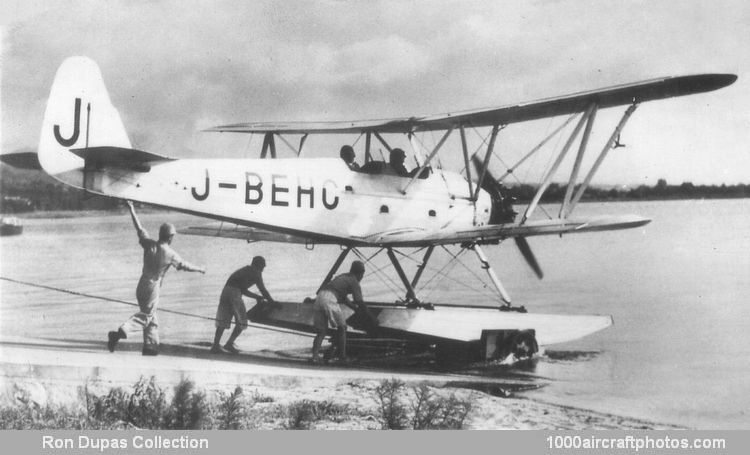05/31/2022. Remarks by Johan Visschedijk: "In 1930 the Imperial Japanese Navy asked for a new design to replace the Yokosho Type 13 Seaplane Trainer. The aircraft that emerged was designed under the leadership of Lieutenant-Commander (Eng) Jira Saha and Engineer Tamefumi Suzuki. It was unusual in that it had a welded steel tube fuselage, and Saha became known for designing the first aircraft of this type in Japan, the method having only been tried experimentally before by Ishikawajima. The steel fuselage was covered with fabric, as was the wooden wing. The aircraft was powered by a 90hp Hatakaze inverted four-cylinder air-cooled in-line engine, a very unusual design for a Japanese-made engine.
Two prototypes were completed in 1930, and flight tests proved the design to be practical. After acceptance of this trainer for Navy use, it was decided that a version with a 130 hp Gasuden Jimpu 2 seven-cylinder air-cooled radial engine was more practical. This became the standard version beginning in May 1933 as the Type 90 Seaplane Trainer, short designation K4Y1. Production was awarded to KK Watanabe Tekkosho (Watanabe Iron Works Ltd.), which produced 156 aircraft up to 1939. Nihon Hikoki Kabushiki Kaisa (Japan Aircraft Manufacturing Company Ltd.), trading as Nippi, produced another 53 aircraft during 1939-1940. These replaced the much used Type 13 Seaplane Trainer which remained in service until the early part of the Pacific War along with the Yokosho Navy Type 3-2 Land-based Primary Trainer. Although it could be used as a landplane, all operational K4Y1 trainers were equipped with all-metal twin-floats. Eventually, a small number were released for civil use."
No. 14088. Yokosho K4Y1 Type 90 (J-BEHC)
APS No. 1198

Created May 31, 2022